Abstract
Balance studies have been performed for lead upon eight healthy children in three different home environments and upon eight children with inborn errors of metabolism in hospital (consuming two different types of synthetic diet). The balances were for 3 days and involved the use of metal-free diapers where indicated. The concentration of lead in all the samples was determined by atomic absorption spectroscopy after suitable sample preparation.
In addition, the total population of children under the age of 16 living in a working class area exposed to undue amounts of lead was examined in an attempt to determine whether their mental development had been affected. Blood lead levels, general intelligence, reading ability, and rate of behavior disorder were measured.
The results of the balances showed that the mean daily intake of lead in both groups of children was lower than previously recorded figures, being lowest of all in the breastfed infant. The healthy group absorbed a mean value of 53% and retained 18% of the dietary intake and there was no relationship to age or month of the year of study. The children with inborn errors showed a significantly lower percentage absorption of lead.
The preliminary results of the population survey showed that distance from the polluting lead source was related to blood lead level, but no relationship could be found between blood lead level and any measure of mental function.
Full text
PDF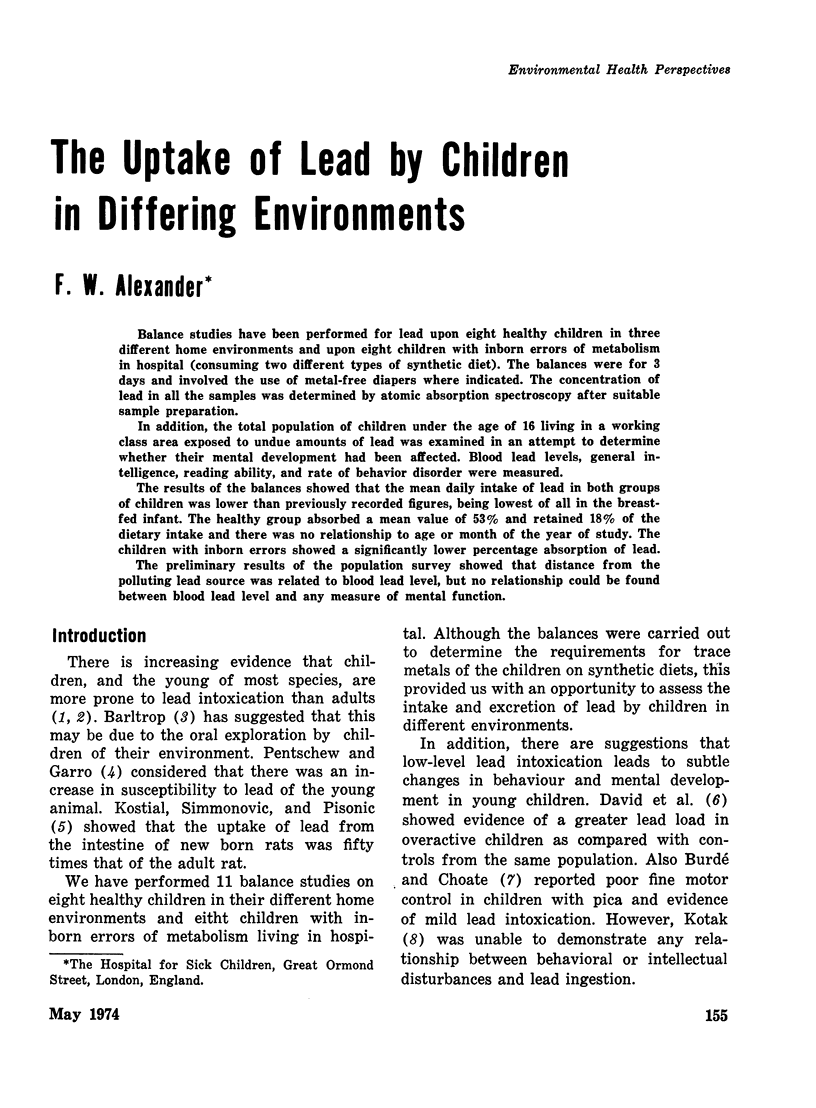
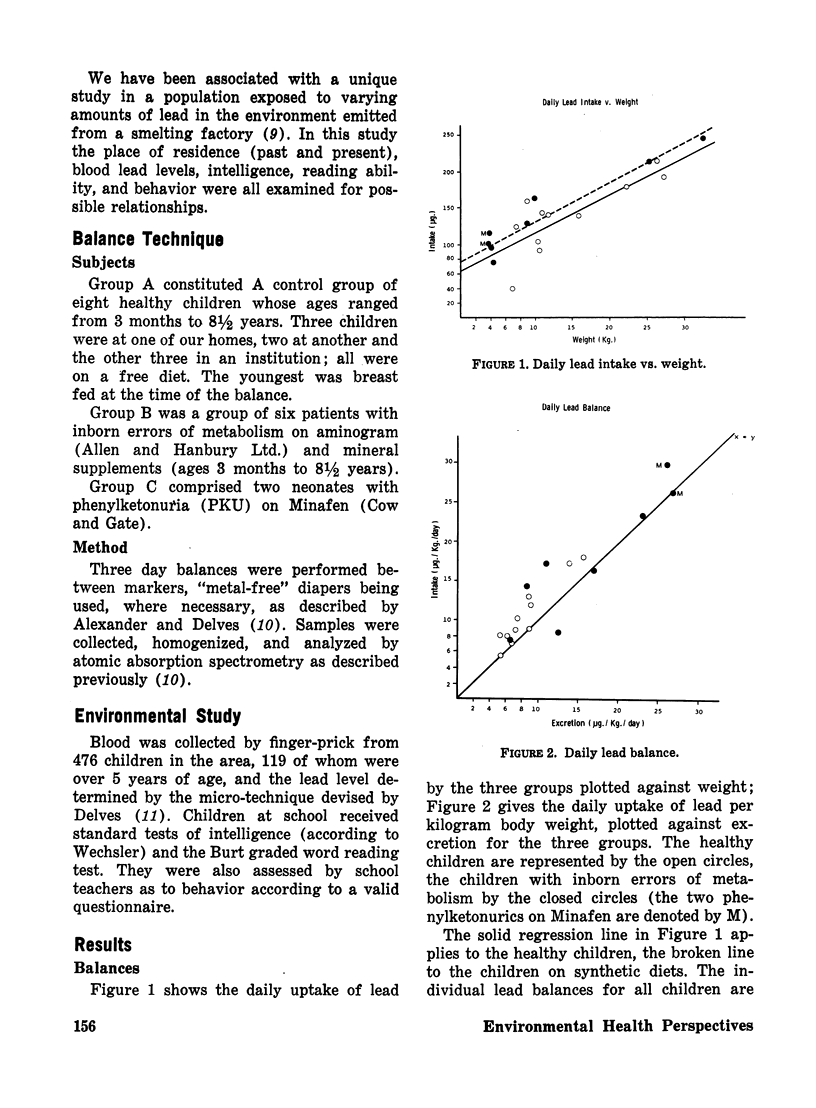
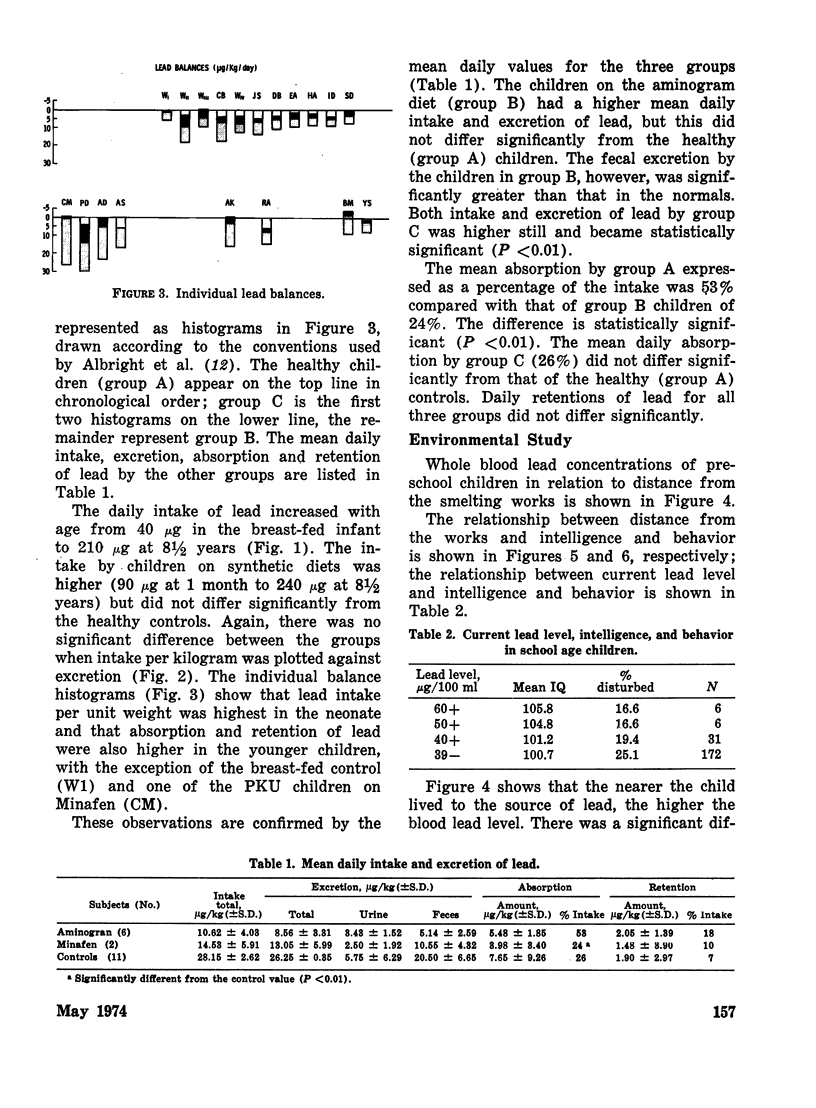
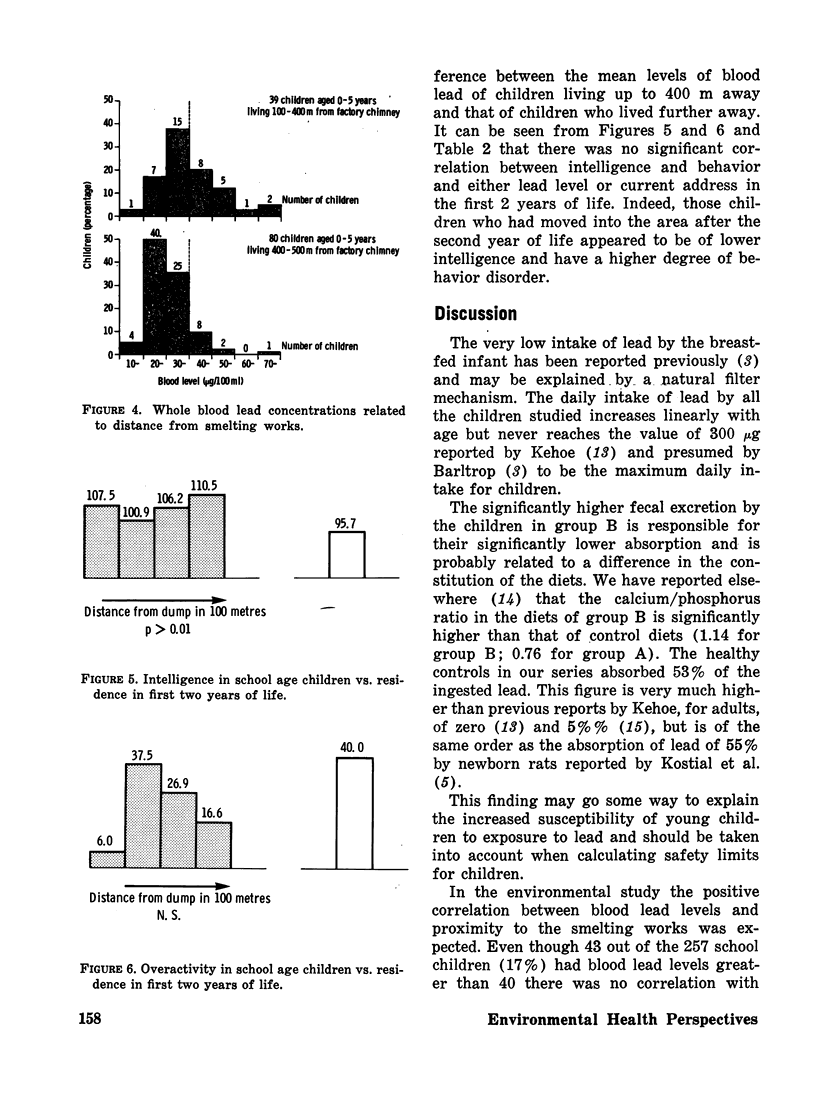
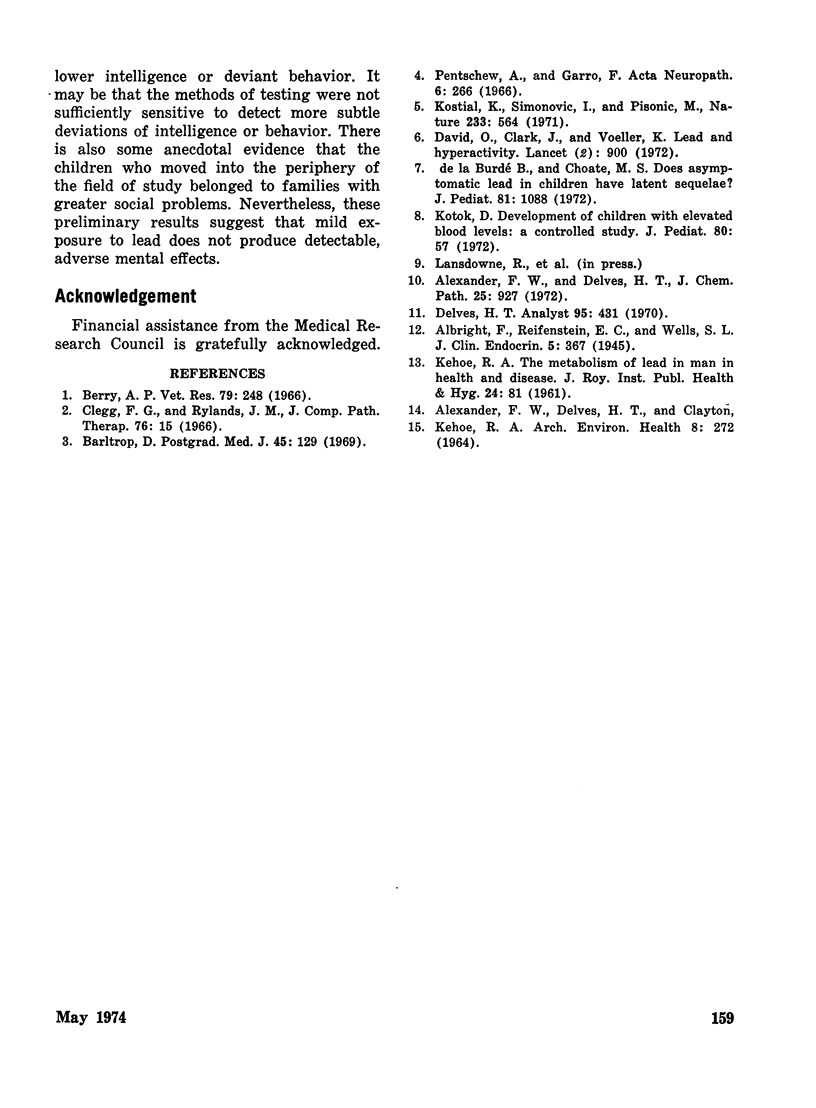
Selected References
These references are in PubMed. This may not be the complete list of references from this article.
- Barltrop D. Environmental lead and its paediatric significance. Postgrad Med J. 1969 Feb;45(520):129–134. doi: 10.1136/pgmj.45.520.129. [DOI] [PMC free article] [PubMed] [Google Scholar]
- Clegg F. G., Rylands J. M. Osteoporosis and hydronephrosis of young lambs following the ingestion of lead. J Comp Pathol. 1966 Jan;76(1):15–22. doi: 10.1016/0021-9975(66)90043-0. [DOI] [PubMed] [Google Scholar]
- David O., Clark J., Voeller K. Lead and hyperactivity. Lancet. 1972 Oct 28;2(7783):900–903. doi: 10.1016/s0140-6736(72)92534-2. [DOI] [PubMed] [Google Scholar]
- De la Burdé B., Choate M. S., Jr Does asymptomatic lead exposure in children have latent sequelae? J Pediatr. 1972 Dec;81(6):1088–1091. doi: 10.1016/s0022-3476(72)80236-1. [DOI] [PubMed] [Google Scholar]
- Delves H. T. A micro-sampling method for the rapid determination of lead in blood by atomic-absorption spectrophotometry. Analyst. 1970 May;95(130):431–438. doi: 10.1039/an9709500431. [DOI] [PubMed] [Google Scholar]
- KEHOE R. A. The metabolism of lead in man in health and disease. I. The normal metabolism of lead. J R Inst Public Health. 1961 Apr;24:81–97. [PubMed] [Google Scholar]
- Kostial K., Simonović I., Pisonić M. Lead absorption from the intestine in newborn rats. Nature. 1971 Oct 22;233(5321):564–564. doi: 10.1038/233564a0. [DOI] [PubMed] [Google Scholar]
- Kotok D. Development of children with elevated blood lead levels: a controlled study. J Pediatr. 1972 Jan;80(1):57–61. doi: 10.1016/s0022-3476(72)80453-0. [DOI] [PubMed] [Google Scholar]
- Pentschew A., Garro F. Lead encephalo-myelopathy of the suckling rat and its implications on the porphyrinopathic nervous diseases. With special reference to the permeability disorders of the nervous system's capillaries. Acta Neuropathol. 1966 Jun 1;6(3):266–278. doi: 10.1007/BF00687857. [DOI] [PubMed] [Google Scholar]


